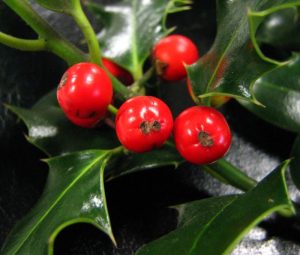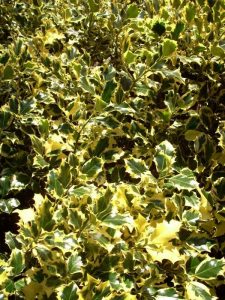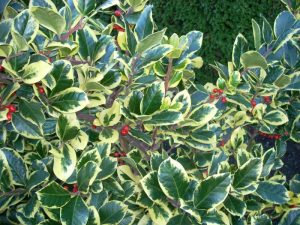A plant of seasonal interest, Ilex aquifolium has a wide geographical distribution ranging through South West Europe, North Africa, to South West Asia. Cultivated in Britain for centuries.
Long associated with mystic power, sprigs of Holly have been used in wreaths since Roman times. These beliefs were adopted by Christianity and Holly is now firmly associated with Christmas. As Ilex aquifolium is dioecious, that is male and female flowers produced on separate plants, one point to remember when bringing holly into the house as decoration is that equal amounts of berried and non berried, (male), sprigs should be used. If not, this will determine the dominant sex of the household.
Through exploring and explaining the world of plants, we grow and conserve plants and appreciate their form in a garden setting. At the garden are huge stands of Ilex, containing a mixture of both male and female plants leading to good pollination and in most years a decent crop of berries.
Botanically these are referred to as drupes containing nutlets. Similar to a plum, a drupe is a fleshy fruit containing seeds, each seed surrounded by a hard, stony layer.
The glossy evergreen leaves vary in their shape, shade and prickliness, some devoid of teeth and totally smooth in outline. Once established these strong growing plants make first class hedges and where room allows solid windbreaks.
Two yellow variegated cultivars of note are ‘Golden Queen’, a male flowered c.v. growing as a mature specimen north of the copse. The leaves are edged with sharp teeth whereas ‘Golden King’, has mainly smooth leaves. It is conversely a female flowered and berrying c.v. Seen growing as a young specimen in the Queen Mother Memorial Garden.



